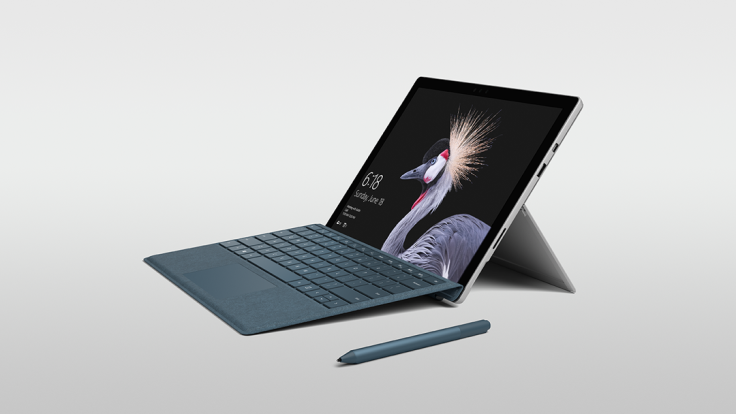Microsoft’s New Surface Pro has been on the market for about a month, and users have been freaking out over the device’s light bleed issues. Now, aided by a report from PC expert Paul Thurrott, examples of the problem have been flooding in. That being said, those deeply involved in the tech space have said there’s actually nothing to worry about.
In order to fully understand the debate, however, we must first get a clear example of what the phenomenon looks like. As the picture below from the Microsoft forums illustrates, the display labeled as the 2017 model definitely has a greater level of screen bleed than 2015’s Surface Pro 4. Take a look at the bottom edge of the newer panel. It’s got a whiter hue that simply didn’t exist before.
For those who purchased the New Surface Pro expecting the very latest and best tech on all aspects of the device, this is a severe problem. “I’ve never seen such a widespread problem,” reddit’s Terrariant wrote. “It seems like almost every device has bleed. It's keeping people from purchasing Surfaces and causing people to return them as well.”
Despite the seemingly far reach of the defect, however, Thurrott chose to shut it down in the sourced editorial:
“All portable PCs suffer from some level of light bleed, so there’s that. It all comes down to individual PC designs, variances in individual build quality and other factors…
“When I look at my own 2017-era Surface Pro, I see no light bleed at all in normal usage. Which explains why I am so “Microsoft biased” and didn’t mention it in my review. But you can contort things to see a bit of light bleed by hiding the taskbar and using a solid color as the background image. It’s there, a little bit. Just like it is on other PCs.”
In some ways, this rationale could be compared to Apple’s antennagate response shortly after the release of the iPhone 4 in 2010. Late CEO Steve Jobs essentially argued that all mobile phones experience some degree of signal loss, so there was nothing wrong with his team’s product. However, in his analysis of the New Surface Pro, Thurrott notes that the iPhone’s signal loss was far greater than competing devices. As a result, Apple was forced to pay $15 to a large number of users in a class action lawsuit. At this point in time, the New Surface Pro’s screen bleed doesn’t appear to be as severe or damaging to daily use of the tablet.
While Thurrott can’t comment on every single case of this issue, his perspective does have merit. Every mobile device, from laptops to tablets and even smartphones, does have some degree of screen bleed. In fact, the personal laptop used to type this article probably has worse screen bleed than the illustrated picture. At best it would appear that Microsoft may have sprung for a cheaper panel or panel design on the New Surface Pro, but that’s hard to confirm.
If we had to guess, this issue will likely quietly resolve itself over time, just like antennagate or dead pixels on PSP screens. More recently, Nintendo downplayed malfunctions with the left Joy-Con of its Nintendo Switch console. All of these shortcomings were remedied in manufacturing without any direct admission of guilt. Considering Microsoft’s silence now, we don’t expect the company’s approach to change.
The New Surface Pro is available now starting at $799.
Have you had issues with screen bleed on your New Surface Pro? Should Microsoft be taking these complaints more seriously? Tell us in the comments section.














![[EG April 19] Best 'Stardew Valley' Mods That Will Change](https://d.player.one/en/full/226012/eg-april-19-best-stardew-valley-mods-that-will-change.png?w=380&h=275&f=955520b8313253ee3c39c791f6210f38)



